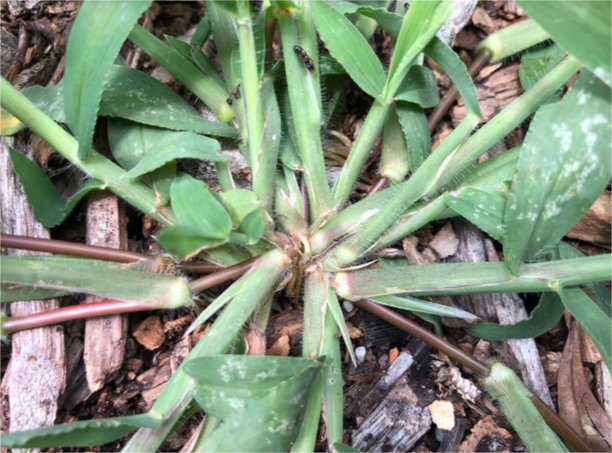Crabgrass Plant
Crabgrass (Digitaria sanguinalis) grows up to 2 ft, prefers well-drained soil, full sun, moderate moisture, and is edible but not medicinal.

Habit
Grass
Height
30 cm
Growth
Fast
Soil
Well-drained, sandy, loamy
Shade
Full
Moisture
Moderate
Edible
No
Medicinal
No
Origin
Native to US
Climatic Condition
Warm, dry
Temperature (°)
25 to 30°C
Humidity (%)
70 to 90
Potting media
Loamy soil mix
Fertilizers
Balanced fertilizer
Watering
Keep moist, not soggy
Plant Weight
30 to 50 g
Flowering Time
Summer (June-August)
Soil Ph level
6.0 to 7.0
Water Ph level
6.5 to 7.0
Soil EC
Moderate
Yield Per Plant
N/A
NPK ratio
10:10:10
life Span
Annual
Health Benefits
Not edible, often a nuisance in lawns.
Suggested Grow Media or Potting Mix ?
|
Suggested Fertigation/Fertilizers
|
Common Diseases and Remedies
Leaf Spot, Powdery Mildew, Rust, Aphid Infestation, Root Rot
Brown or black lesions on leaves, White powdery growth on leaves, Reddish or orange pustules on leaves, Distorted leaves and sticky residue, Wilting and stunted growth
Neem oil, compost tea, improve air circulation, sulfur spray, insecticidal soap, Improve soil drainage.
Copper-based fungicides, Sulfur-based fungicides, Fungicides with propiconazole, Chemical insecticides, Soil-applied fungicides
HEALTH BENEFITS
- Nutritional Value: Some species are edible and provide essential nutrients.
- Traditional Medicine: Used in some cultures for treating wounds and inflammation.
- Soil Detoxification: Though not a direct health benefit, crabgrass helps clean contaminated soils, which can impact food safety.

